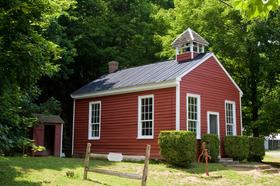Rock Canyon High School Pre-k serves 16 students in grades Prekindergarten.
Minority enrollment was 56% of the student body (majority Hispanic and Asian), which was higher than the Colorado state average of 50% (majority Hispanic).
School Overview
Grades Offered
Grades Prekindergarten
Total Students
16 students
Gender %
Total Classroom Teachers
n/a
School Rankings
Student : Teacher Ratio
n/a
15:1
American Indian
n/a
1%
Asian
25%
3%
Hispanic
25%
36%
Black
n/a
5%
White
44%
50%
Hawaiian
n/a
n/a
Two or more races
6%
5%
All Ethnic Groups
School Statewide Testing
School District Name
Source: National Center for Education Statistics (NCES), CO Dept. of Education
Frequently Asked Questions
How many students attend Rock Canyon High School Pre-k?
16 students attend Rock Canyon High School Pre-k.
What is the racial composition of the student body?
44% of Rock Canyon High School Pre-k students are White, 25% of students are Asian, 25% of students are Hispanic, and 6% of students are Two or more races.
What grades does Rock Canyon High School Pre-k offer ?
Rock Canyon High School Pre-k offers enrollment in grades Prekindergarten
What school district is Rock Canyon High School Pre-k part of?
Rock Canyon High School Pre-k is part of Douglas County School District No. Re 1.
Recent Articles

Is Your ľĹÓÎĚĺÓý Understaffed? Why Schools are Instituting Hiring Freezes
Learn about how the current budget constraints are prompting public schools to institute hiring freezes - and how this will impact your children.

43 Fantastic ESL Resources for Students
We've put together this ESL resource guide to help students, from teens to adults, get the help they need to achieve their goals with learning English

Segregation in K-12 Education: Colonial Era
Explore the origins of educational segregation during the colonial era and the differential treatment of Native American, African American, and white students. This article delves into the historical context, policies, and societal attitudes that shaped early education in colonial America, highlighting the disparities and injustices that persisted within the schooling systems of that time.





